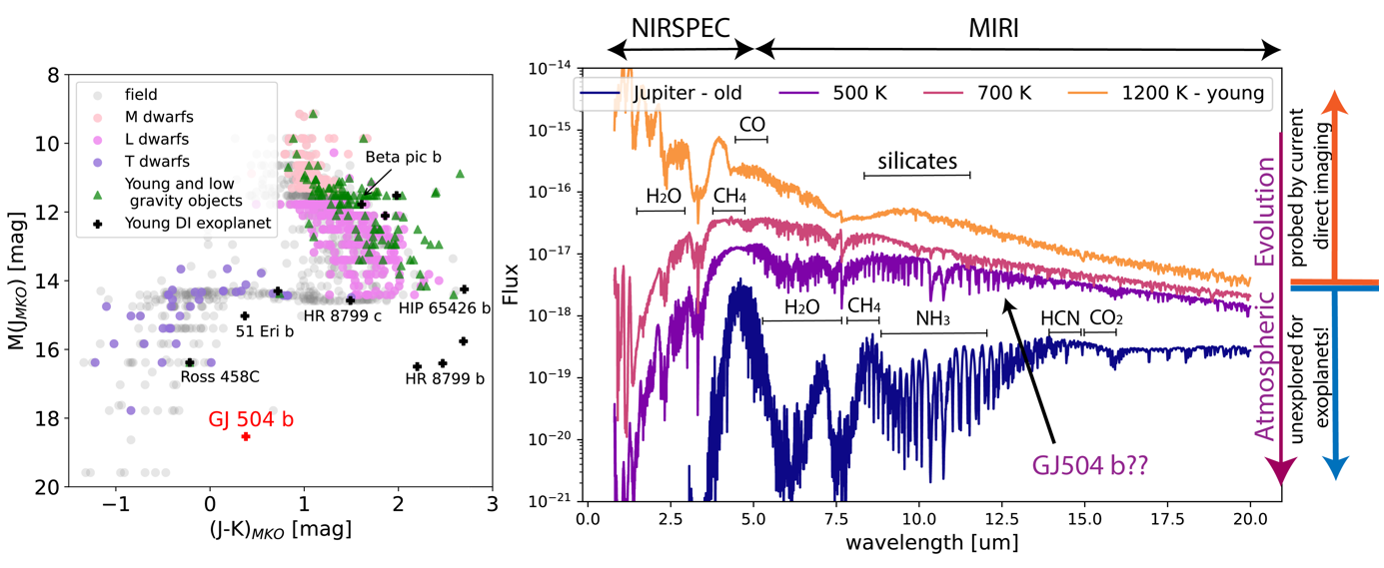JWST Cycle 2 time awarded to look at a young Jupiter!
Investigating the evolution of the atmosphere of an adolescent Jupiter with the MIRI instrument onboard JWST.
Gas giant planets are thought to form within the protoplanetary disk of their star, starting out at high temperatures and cooling down significantly over time. However, the connection between the formation pathway and atmospheric evolution of the young, hot, and widely separated directly imaged exoplanets and our Solar System gas giants like Jupiter is not well understood.
A team led by the group of Exoplanets and Habitability at ETH, including 25 scientists from institutes in Europe and the US, proposed to observe a unique exoplanet called GJ504 b with the MIRI instrument onboard the James Webb Space Telescope, and got awarded 10 hours of telescope time*. This exoplanet bridges the gap between the population of directly imaged young exoplanets (∼ 1000 K) and our own Jupiter (∼ 130K). With a temperature of 500 K it orbits its solar-type star on a solar scale, coincidentally at a similar distance (~40 AU) where Jupiter is thought to have formed, before it migrated inwards to its present orbit (~5 AU).
With these observations, the team hopes to carefully characterise the atmosphere of this giant exoplanet, measuring its composition and notably the presence of ammonia that is expected for such temperatures. These measurements will make it possible to draw comparisons to other objects like cold brown dwarfs (very low mass stars that exhibit similar atmospheres as gas giant exoplanets), but also directly to Jupiter, probing a distinct phase in the evolution of the amtpshere.
On May 10th the JWST Cycle 2 proposals were announced, amid a very competitive and oversubscribed call that closed on January 27 this year. In total almost 36,500 hours were requested for the 5000 hours available in Cycle 2 (a factor of 1:7), that will run from July 1, 2023, to June 30, 2024. Another four programs involving members of the Exoplanet and Habitability were awarded time.

